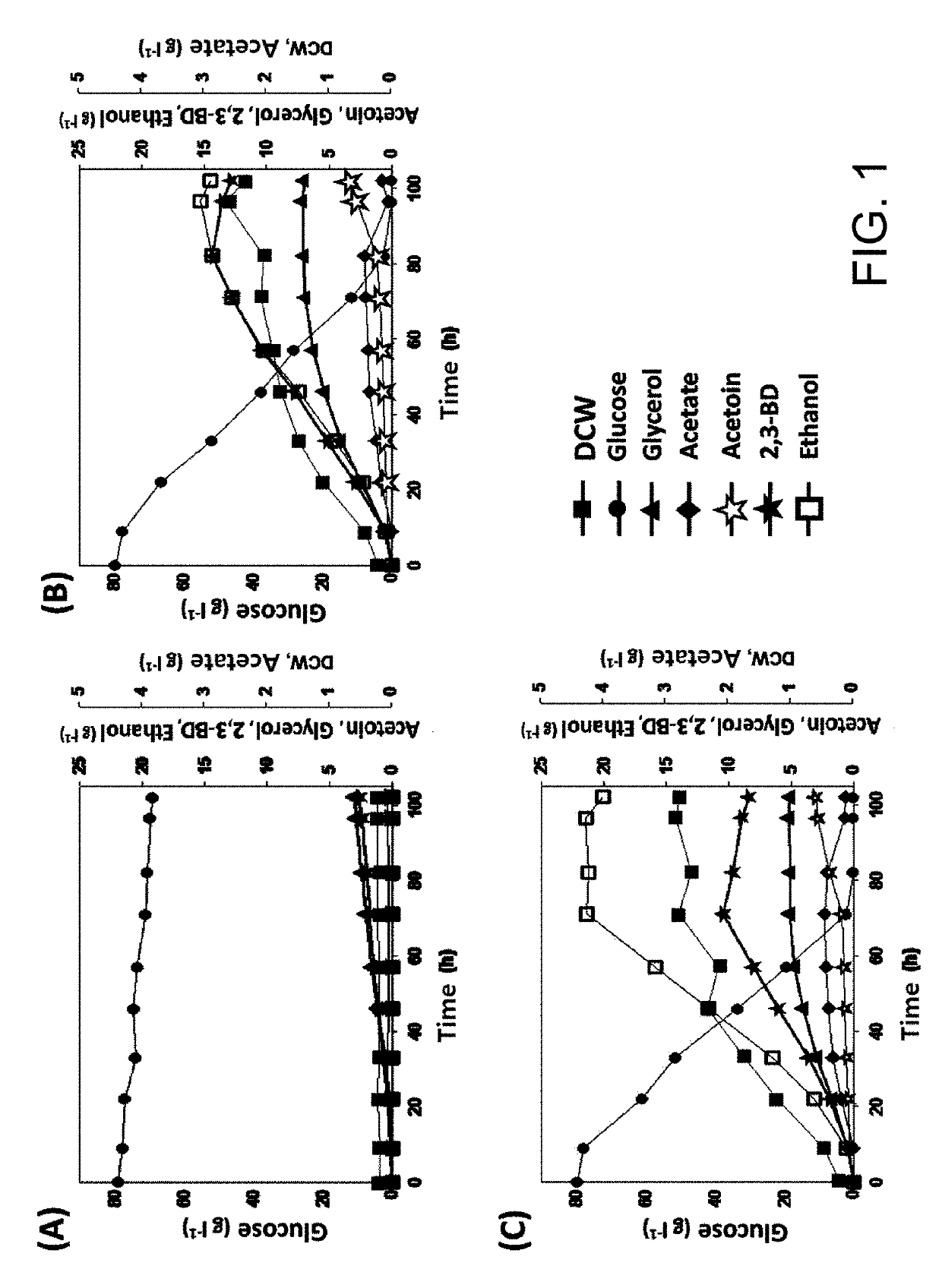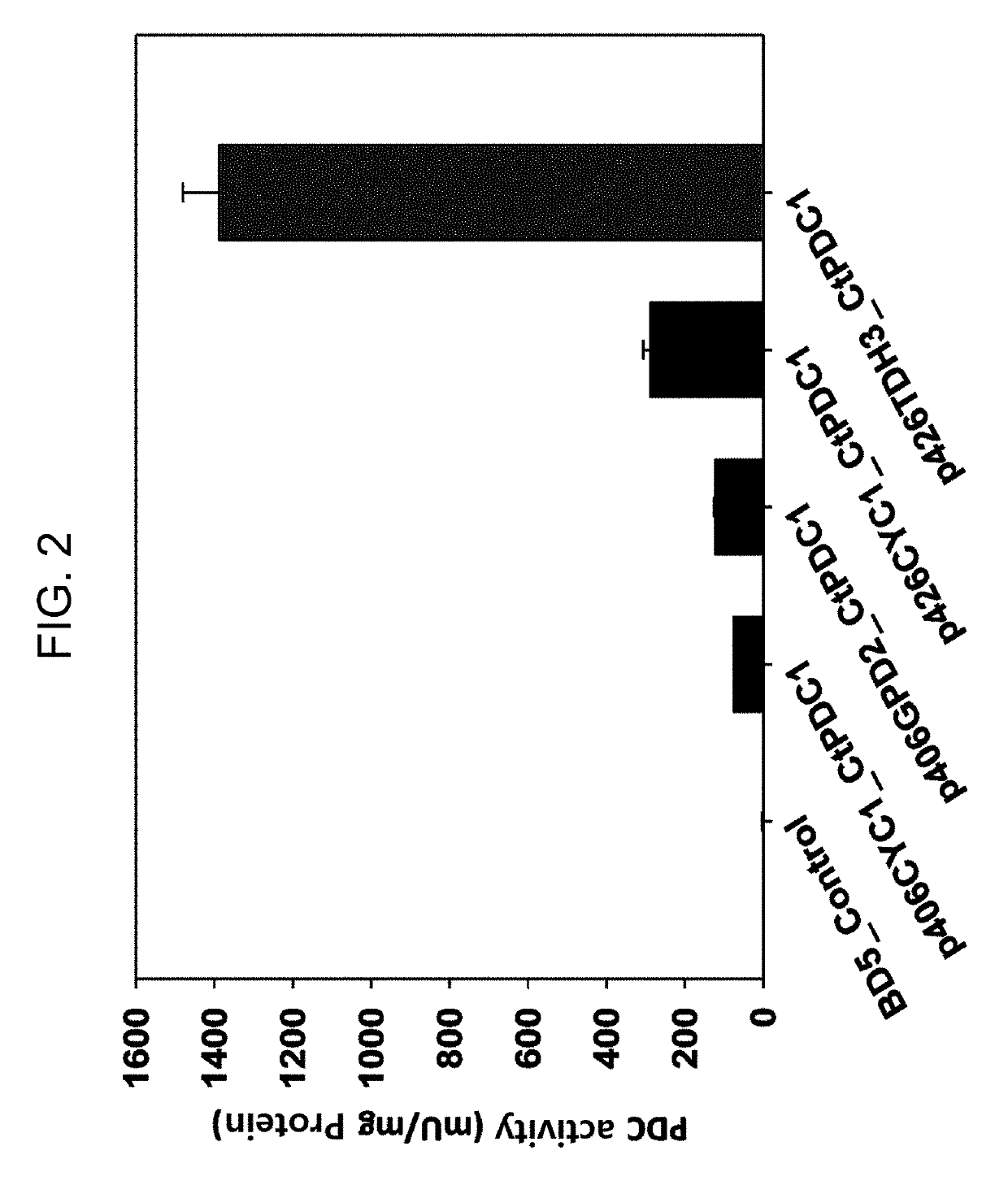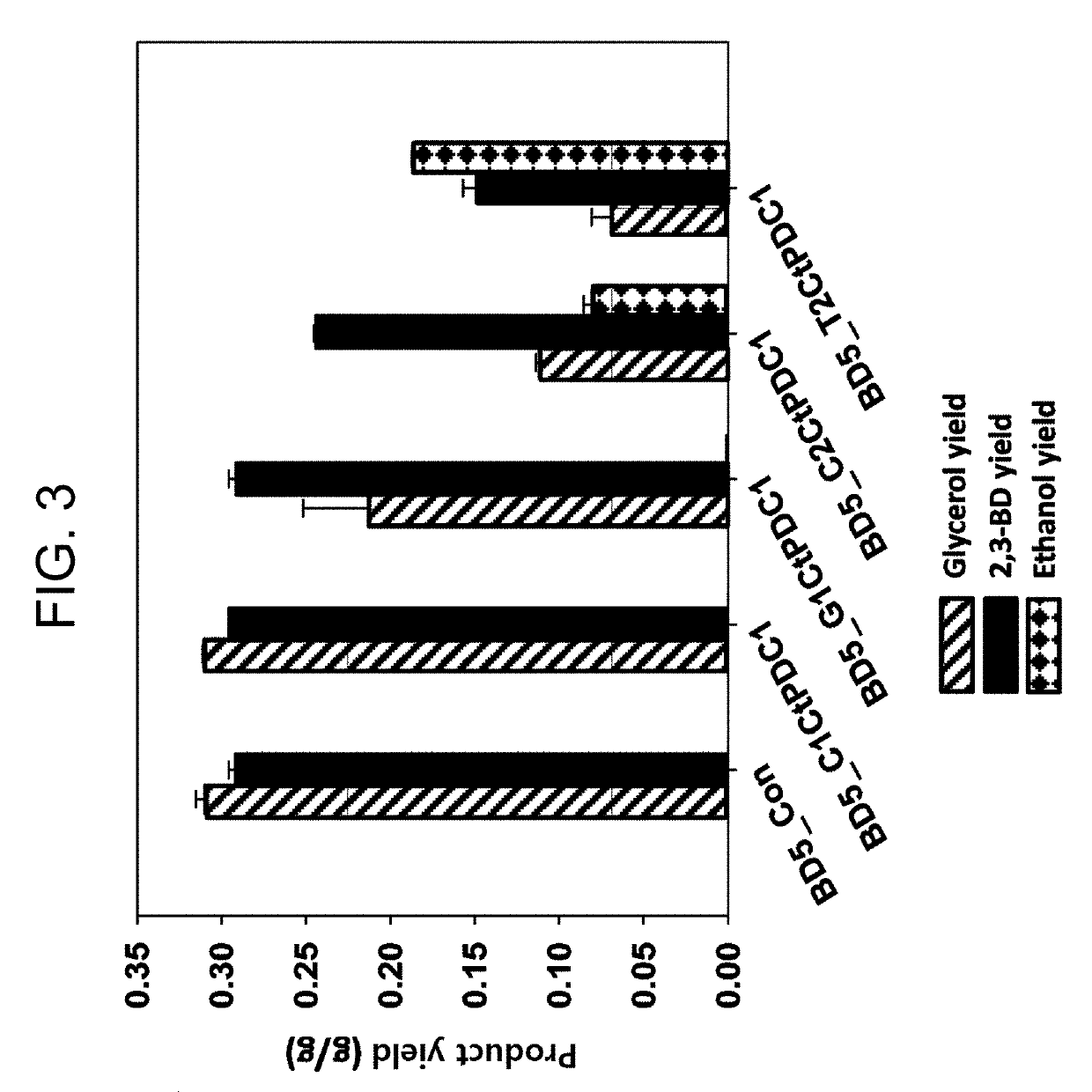Recombinant yeast for producing 2,3-butanediol including pyruvate decarboxylase derived from candida tropicolis and method for producing 2,3-butanediol using the same
a technology of pyruvate decarboxylase and recombinant yeast, which is applied in the direction of lyase, carbon-carbon lyase, transferase, etc., can solve the problems of inherent limitations in safety and industrialization, the effect of reducing the amount of nadh supplied to the cytoplasm, and reducing the concentration of nadh
- Summary
- Abstract
- Description
- Claims
- Application Information
AI Technical Summary
Benefits of technology
Problems solved by technology
Method used
Image
Examples
production example 1
-Butanediol-Producing Strains into Which Disruption of PDC1, PDC5 and PDC6 Genes and 2,3-Butanediol Biosynthetic Pathway are Introduced
[0058]In case of wild yeast, pyruvate produced as a glucose metabolite is mostly converted into ethanol by pyruvate decarboxylase and alcohol dehydrogenase. Thus, it is necessary to prevent conversion of pyruvate into ethanol in order to produce 2,3-butanediol at high yield from yeast.
[0059]Thus, in the present invention, the pyruvate decarboxylase genes, PDC1, PDC5 and PDC6, were first disrupted to establish strains in which the activity of pyruvate decarboxylase is completely removed. In order to introduce the 2,3-butanediol biosynthetic pathway into this strain, acetolactate synthase (alsS) and acetolactate decarboxylase (alsD) derived from Bacillus subtilis were introduced into a plasmid containing the CYC1 terminator and the TDH3 promoter of S. cerevisiae, and 2,3-butanediol dehydrogenase (BDH1) of S. cerevisiae was introduced into a plasmid con...
example 1
r Pyruvate Decarboxylase (PDC) Gene Having Low Activity
(1) Introduction
[0060]The yeast strain, from which the PDC genes were removed, showed a low productivity of 2,3-butanediol due to low cell growth rate and low substrate consumption rate.
[0061]Thus, in order to efficiently produce 2,3-butanediol, the activity of pyruvate decarboxylase was suitably regulated to secure a pyruvate substrate, which is a precursor of 2,3-butanediol, and at the same time, PDC genes with low activity were searched for to supply the C2 compound.
(2) Materials and Methods
A. Genes and Plasmids
[0062]After extraction of the genomic DNAs from Candida tropicalis, Kluyveromyces marxianus and Saccharomyces cerevisiae, PDC1 (ScpDC1) derived from Candida tropicalis, PDC1 (KmPDC1) derived from Kluyveromyces marxianus, and PDC1 (ScPDC1), PDC5 (ScPDC5) and PDC6 (ScPDC6) genes derived from Saccharomyces cerevisiae were cloned.
[0063]As an expression vector for yeast, the “origin” of “2 micron plasmid” and the p426GPD pl...
example 2
nt of Cell Growth, Glucose Consumption Rate and 2,3-butanediol Productivity of Strains Expressing CtPDC1 and KmPDC1
(1) Introduction
[0068]Cell growth and glucose consumption rates were measured using the Pdc-expressing strains (CtPDC1, KmPDC1) prepared in Example 1, and the productivities of 2,3-butanediol were compared.
(2) Materials and Methods
A. Strains and Plasmids
[0069]A strain producing 2,3-butanediol, while not expressing Pdc, a strain expressing CtPDC1 and a strain expressing KmPDC1 were used. CtPDC1 and KmPDC1 were expressed using the TDH3 promoter and the CYC1 terminator of S. cerevisiae.
[0070]B. Medium and Culture Conditions
[0071]A medium containing 6.7 g / L of “yeast nitrogen base w / o nitrogen base”, 1.4 g / L of “an amino acid mixture” and 80 g / L of glucose was used for fermentation. The initial cell concentration was 0.2 g / L, the fermentation temperature was maintained at 30° C. and the stirring speed was 80 rpm.
(3) Result
[0072]The control group with no PDC expression had ...
PUM
| Property | Measurement | Unit |
|---|---|---|
| Mass | aaaaa | aaaaa |
| Mass | aaaaa | aaaaa |
| Fraction | aaaaa | aaaaa |
Abstract
Description
Claims
Application Information
 Login to View More
Login to View More - R&D
- Intellectual Property
- Life Sciences
- Materials
- Tech Scout
- Unparalleled Data Quality
- Higher Quality Content
- 60% Fewer Hallucinations
Browse by: Latest US Patents, China's latest patents, Technical Efficacy Thesaurus, Application Domain, Technology Topic, Popular Technical Reports.
© 2025 PatSnap. All rights reserved.Legal|Privacy policy|Modern Slavery Act Transparency Statement|Sitemap|About US| Contact US: help@patsnap.com



